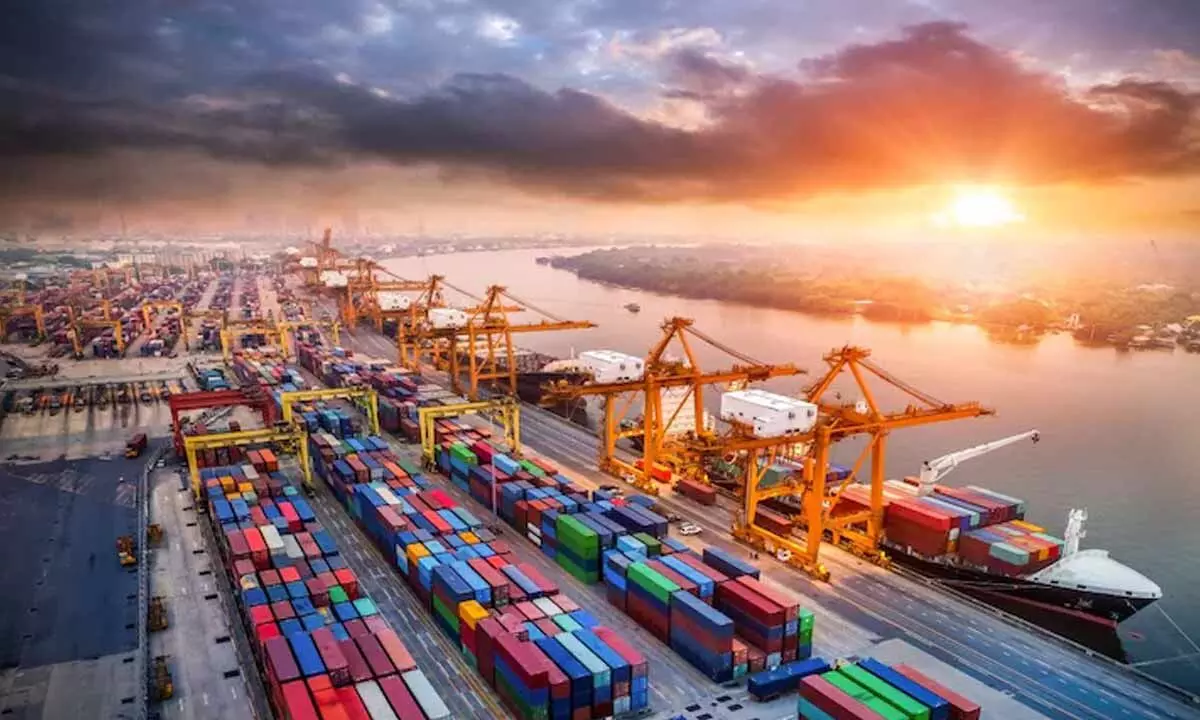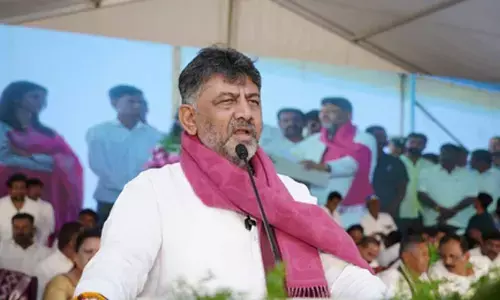India-Australia FTA: A cause for cheer amid slowing export growth

India-Australia FTA: A cause for cheer amid slowing export growth
The FTA was formally signed in April this year, but was awaiting clearance from governments of both sides. It now looks as if it may be implemented from January 2023
Sushma RamachandranThe news that the Australian Parliament has cleared the free trade agreement (FTA) with India has brought some cheer just as the country seemed to be bracing itself to face a scenario of low export growth in the near future. It opens up the possibility of trade with that country virtually doubling over the next five years to &45-50 billion. It will provide duty free access reportedly to over 6,000 brand sectors including textiles, leather, furniture, jewellery and machinery in the Australian market. The FTA was formally signed in April this year but was awaiting clearance from governments of both sides. It now looks as if it may be implemented from January 2023.
The FTA is timely as exports have just begun to slow down in response to global headwinds, after having risen rapidly for nearly two years. Export growth in October this year contracted for the first time in 20 months by 16.7 per cent. This followed a 10.24 per cent rise in September. But demand has fallen in key international markets owing to the difficult geopolitical situation arising out of the Ukraine war as well as the constraints of the zero-Covid policy in China. This in marked contrast to the post-pandemic period last year when there was a surge in world demand. It is now slowing down as world economies are faced a crisis. Inflationary trends are touching 40 year highs in developed countries like the US and the UK prompting central banks to aggressively raise interest rates. This has, in turn, created the spectre of recession even as the Ukraine war has sparked off energy shortages throughout Europe.
Not only that, economic constraints have led to a political fall out in several countries. For instance, in the U.K. , the new Prime Minister Rishi Sunak had to assume office after the markets reacted sharply to his predecessor's fiscal policies. Even though he rolled back many of them, his party's popularity has taken a severe hit. It is these western markets that are key destinations for India's exports and it is here that the threat of recession has impacted demand. The situation is not likely to improve in the near term as the Ukraine war is continuing unabated while China is now facing new Covid outbreaks in Beijing. The net result is that most major economies are seeing contraction in growth.
The outlook is vastly different for India, which is one of the few countries continuing on a positive growth path this year. While inflationary pressures are evident like elsewhere, these are not at unprecedented levels. And the central bank is now confident that inflation will recede to about 6.5 per cent by the end of the current fiscal, signalling that aggressive rate hikes may be given a pause. Global supply chain disruptions have also affected the manufacturing sector, like elsewhere, but domestic demand has ensured that sales of key products like automobiles have surged yet again. Energy is the one issue that could create problems, especially on the inflation front, but international oil markets are now in softening mode. Fears of global recession have pushed prices of the benchmark Brent crude down to around 87 dollars per barrel.
Exports are thus the only weak spot for the economy right now. Slowing exports and higher imports have led to a widening current account deficit. So far banks and rating agencies have estimated it will range between 3.3 to 3.9 per cent of GDP for 2022-23. In contrast, it was 1.2 per cent of GDP at 38.7 billion dollars in the previous fiscal. But the Reserve Bank of India is still confident that it will remain within 3 per cent in the current fiscal. At that level, it would be considered comfortable as a 2.5 to 3 per cent deficit is sustainable for this country.
Given the difficult external environment, it may not be possible to keep the current account deficit contained at this level. The reason is largely the sluggishness in exports which is covering a wide range of commodities. The data on exports in October showed contraction in most non-oil categories including handicrafts, textiles, iron ore, chemicals, engineering goods and gems and jewellery. Textiles, a key export commodity, fell by as much as 41 per cent during the month while apparel exports dipped by 21 per cent. Similarly, oil exports which had surged by 43 per cent in the previous month, recorded an 11 per cent contraction. This can be attributed partly to lower world oil prices and partly to slowing demand. Imports may have risen by only 5.7 per cent but that has been sufficient to put pressure on the current account deficit. There could have been a silver lining for exporters as the depreciating rupee should have provided a competitive edge. This advantage has been blunted by the fact that other currencies have also been falling against a strengthening dollar. Even so, services exports are expected to reap the benefit of the falling rupee in the current fiscal.
The way forward for policymakers is clearly to try and provide support to the export community that is going face tough times in coming months. The focus should be on trying to cut down infrastructure bottlenecks at airports, ports and railheads. These raise costs significantly for exporters and reduce competitiveness in world markets. Similarly, documentation and red tape needs to be cut down as far as possible.
It must be recalled that exports of goods and services currently comprise 21.4 per cent of GDP. Thus a slowdown in this sector could affect overall growth in the current fiscal. In this backdrop, it is clear that efforts need to be made urgently to help the exporting community tide over the immediate crisis.



















